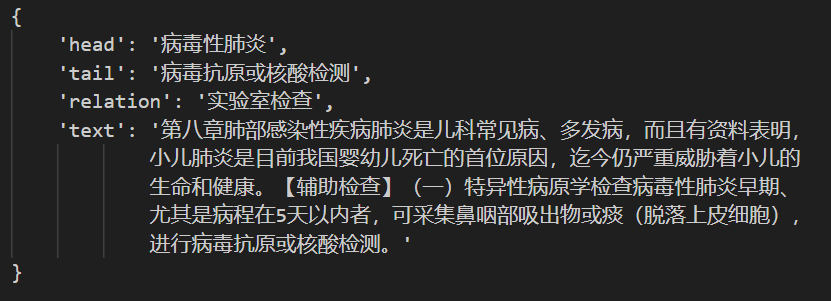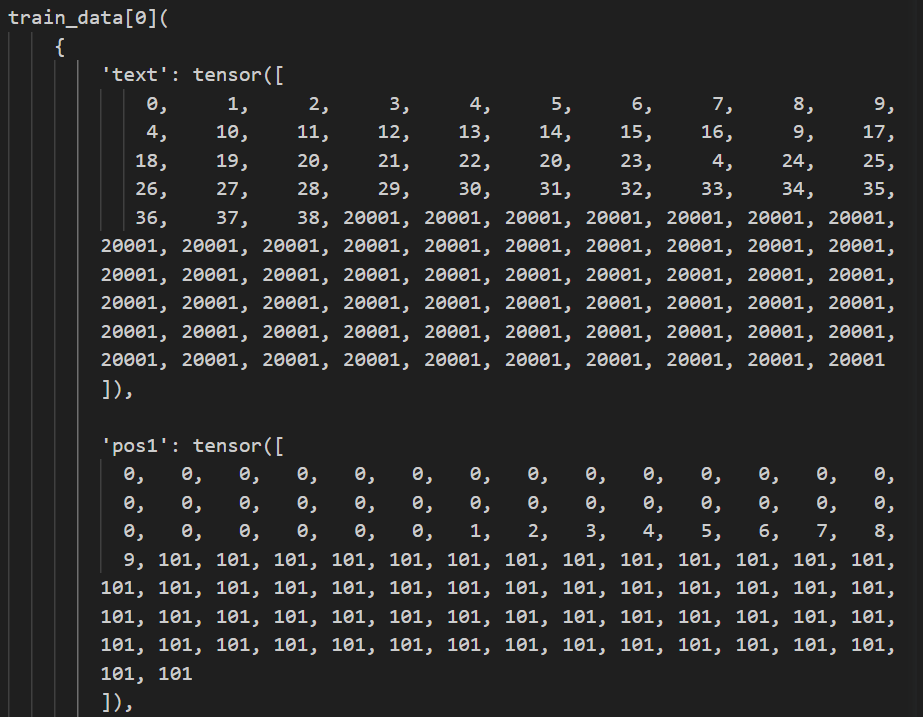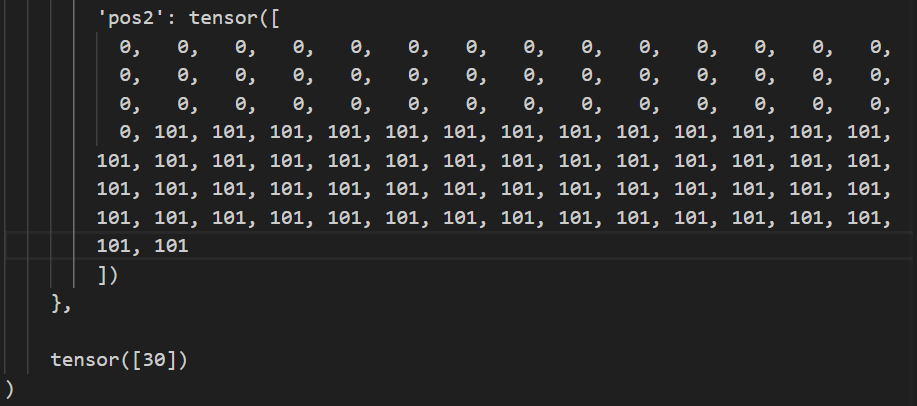Text Classification Based on Chinese Medical Relation Extraction 基于中医关系抽取的文本分类 (NLP)
| Data | Details |
|---|---|
| Download link | data.zip |
| Dataset size | Train Dataset : 37965 Valid Dataset : 8186 Test Dataset : 8135 |
| Train Dataset |  |
- Using raw and labeled data to build word embedding based on sentences and head-tail entities.
- Build a suitable CNN for text relationship classification.
- Train the model.
- Predict the test set after the training is completed, and generate a prediction result file.
-
Extract the corresponding relationship from the given head entity, tail entity and sentence in dataset.
-
Classify the sentence into a certain relationship according to the given entity.
-
Through CNN, it is mapped into a 44-dimensional short tensor (44 different classes), and finally through the Argmax function
-
The relationship represented by the corresponding head entity, tail entity and sentence is obtained.
-
Vocab-to-index: After the data is read in, a vocabulary list is constructed for sentences to convert them into index sequences corresponding to the vocabulary.
-
Position: For the head and tail entities, find the corresponding position in the sentence, and convert the "symbol" into a "position".
-
Word-to-vector: For labeled data, the corresponding relationship is converted to the corresponding relationship id through the W2V lookup table and stored in the dataset. We used the skip-gram model to encode data label, word frequency and W2V lookup table.
-
Word embedding: First, set the corresponding word embedding parameters according to the length of vocabulary. Do embedding for the read-in sentence.
-
Feature extraction: Use the head and tail entity position information and sentence information to do feature extraction through convolution and classification.
Data Details Data after reorganizing 
Data after preprocessing 

-
CNN Model:
Layer Layer Name Structure 1 Input embedding Embedding of text + position 1 + position 2 2 Dropout 3 Convolutional Layer Conv1D (kernel = 2) + Tanh + MaxPool1D 4 Convolutional Layer Conv1D (kernel = 3) + Tanh + MaxPool1D 5 Convolutional Layer Conv1D (kernel = 4) + Tanh + MaxPool1D 6 Convolutional Layer Conv1D (kernel = 5) + Tanh + MaxPool1D 7 Convolutional Layer Conv1D (kernel = 6) + Tanh + MaxPool1D 8 Dropout 9 Dropout 10 Fully Connected Layer
-
| Index | Epoch | Train Acc | Valid Acc | Train Loss |
|---|---|---|---|---|
| Value | 10 | 0.8582 | 0.7804 | 0.0281 |
About skip-gram:
-
Given a central word and a context word to be predicted, take this context word as a positive sample. Select several negative samples through random sampling of the vocabulary.
-
Then convert a large-scale classification problem into a two-class classification problem, and optimize the calculation speed in this way. We make a multinomial distribution sampling and take a specified number of high-frequency words as positive labels, and we obtain negative labels by removing positive labels.
-
The code uses a sliding window to scan the corpus from left to right. In each window, the central word needs to predict its context and form training data.
-
Some matrix operations on large vocabularies need to consume huge resources, so we simulate the result of softmax by negative sampling.
-
The size of the vocabulary determines that our skip-gram neural network will have a large-scale weight matrix. All these weights need to be adjusted through hundred millions of training samples, which is very computationally resource-intensive, and very slow to be trained.
-
Negative sampling solves this problem, which is a way to increase the speed of training and improve the quality of the resulting word vectors. Unlike updating all weights for each training sample, negative sampling only updates a small part of the weights for each training sample, which reduces the amount of calculation in the gradient descent process.
-
We use a unigram distribution to select negative words, and the formula in the code is implemented as follows:
$$P(w_{i}) = \dfrac{f(w_{i})^{3/4}}{\sum_{j=0}^{n}(f(w_{j})^{3/4})}$$ $f(w_{i})$ is known as word frequency.When we train the skip-gram model, we convert the dataset into an iterator, and take a batch of samples from the iterator. The Adam optimizer and backpropagation method are used in the training process, and then the word embedding vector in the model is normalized.
-
The word embedding vector is written into "skip-gram-model.txt" for subsequent word embedding and model training.